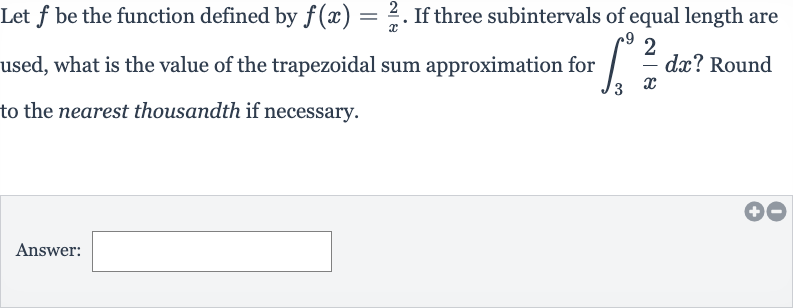Full solution
Q. Let be the function defined by . If three subintervals of equal length are used, what is the value of the trapezoidal sum approximation for ? Round to the nearest thousandth if necessary.Answer:
- Calculate Subinterval Width: To approximate the integral of from to using the trapezoidal rule with three subintervals, we first need to calculate the width of each subinterval. The total interval length is . Since we are using three subintervals, the width () of each subinterval is .
- Evaluate Function at Endpoints: Next, we need to evaluate the function at the endpoints of the subintervals. The endpoints are , , , and . We calculate , , , and .
- Apply Trapezoidal Rule: Now we apply the trapezoidal rule, which is given by the formula:Trapezoidal sum where is the width of each subinterval, to are the endpoints of the subintervals, and is the number of subintervals.
- Perform Addition: Plugging in the values we have:
- Convert to Common Denominator: We now perform the addition:To add these fractions, we need a common denominator, which is the least common multiple of , , , and . The LCM of these numbers is .So we convert each fraction to have the denominator of :
- Add Fractions: Adding the fractions together, we get:= = Now we simplify the fraction if possible and round to the nearest thousandth.

